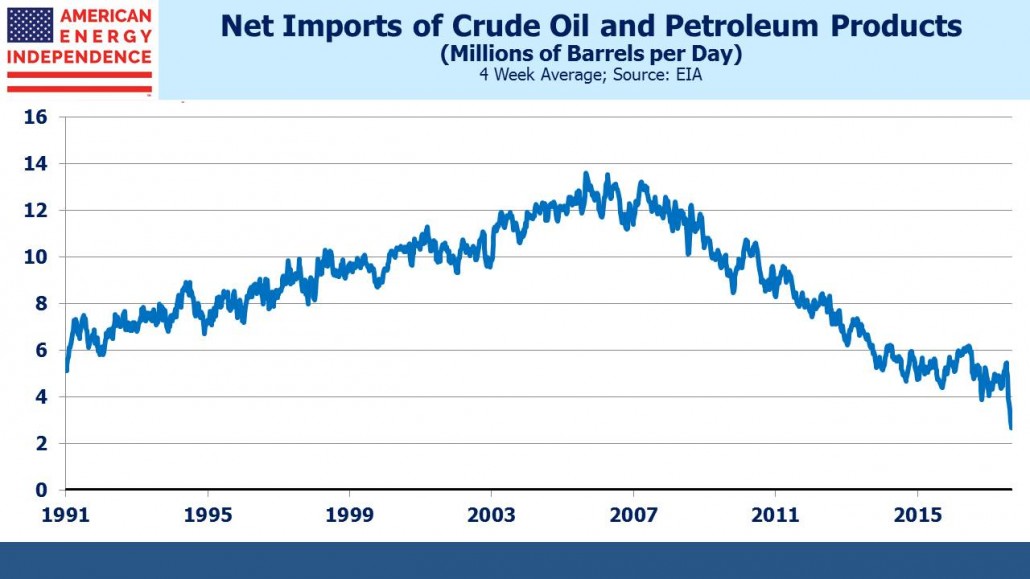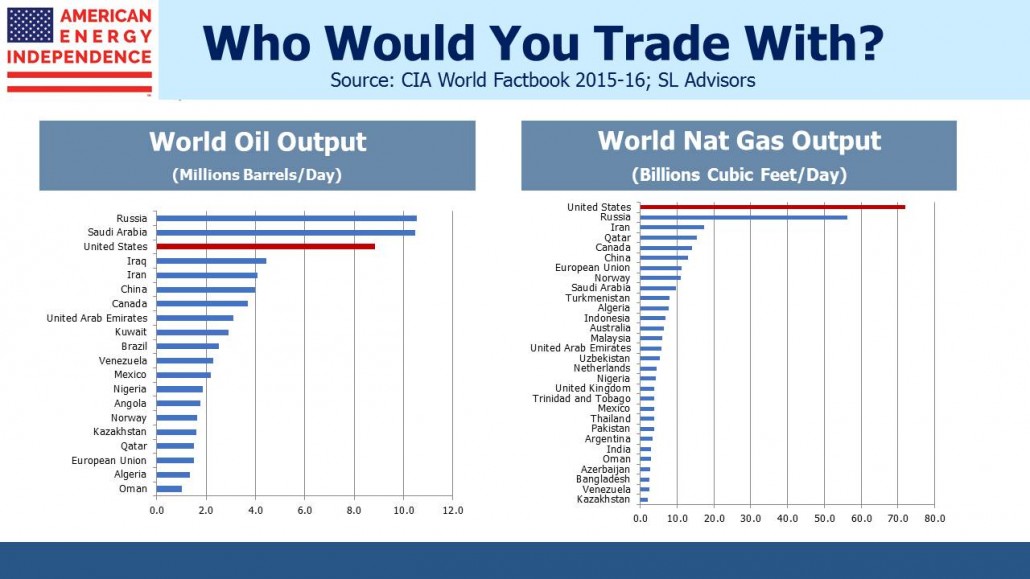American Energy Security
This morning CNBC had ClipperData’s Matt Smith as a guest. He noted that U.S. net imports of crude oil and petroleum products are below 3.44 Million Barrels a Day (MMB/D), a level last seen in February 1985.
OPEC, the International Energy Agency (IEA), and the U.S. Energy Information Administration are all forecasting U.S. crude oil production to increase next year: 1.05 MMB/D (OPEC), 1.1MMB/D (IEA) and 0.8 MMB/D (EIA) respectively. All three forecasts would mean record U.S. oil production.
As a result, the U.S. is becoming a more significant exporter of both crude oil and natural gas. It’s worth remembering that a substantial portion of global supplies of hydrocarbons come from countries that are far less reliable trade partners. The closure of the Forties oil and gas pipeline in the North Sea has contributed to a spike in UK natural gas prices. One consequence is that the UK is preparing to welcome imports of Liquified Natural Gas (LNG) from a Russian LNG export facility even while the U.S. and EU have imposed sanctions designed to impede the financing of such projects. American Energy Independence is to our benefit but will increasingly help extend energy security to others.

